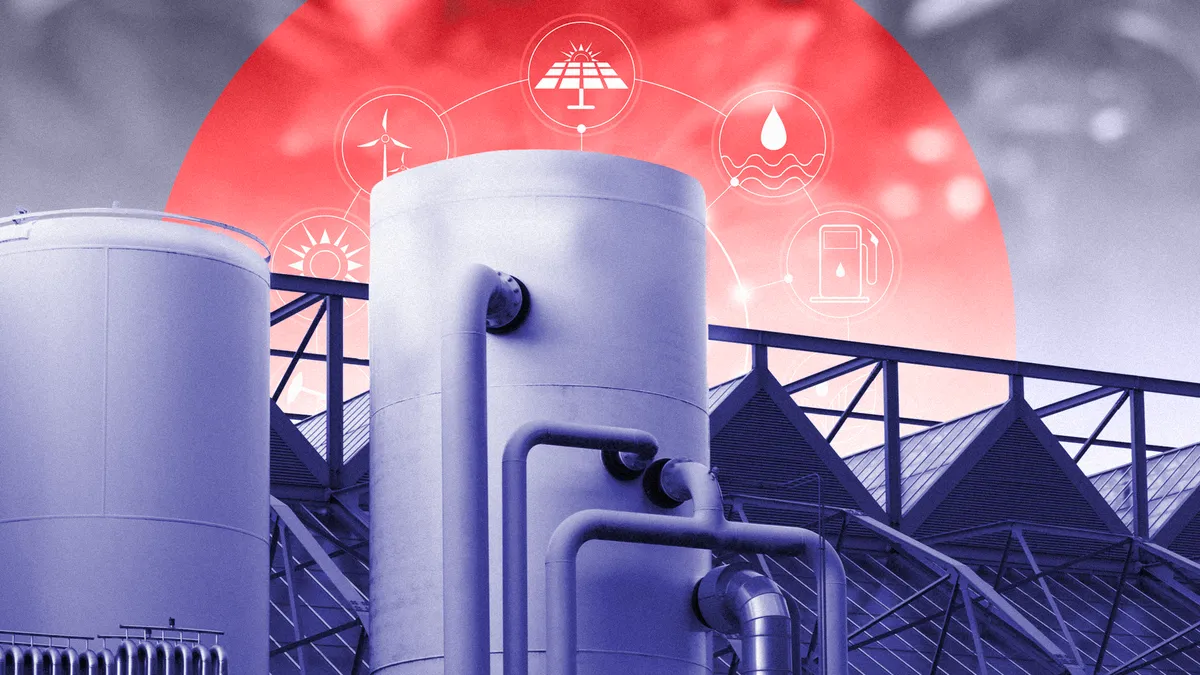Dive Brief:
- State energy offices can advance the research, development, demonstration — RD&D — and subsequent deployment of established and emerging energy storage technologies through policy support, financial incentives, market analyses and other means, the National Association of State Energy Officials said in a guide published last month.
- The California Energy Commission’s Long-Duration Energy Storage grantmaking program, the Utah Office of Energy Development’s support of a planned hydrogen storage facility, Colorado’s Microgrids for Community Resilience grant program and various state efforts to expand distributed storage portfolios all showcase state energy offices’ potential to advance energy storage capabilities, NASEO said.
- But a lack of clarity around regulatory treatment of energy storage assets, outdated grid infrastructure, high capital and financing costs for batteries in comparison to gas-fired power plants, and permitting and interconnection challenges are among the barriers to faster, wider adoption, NASEO said.
Dive Insight:
State energy offices have for years provided financial, technical and planning support for emerging energy technologies such as advanced nuclear.
Like advanced nuclear reactors, many non-lithium energy storage technologies remain in the pre-commercialization phase, and additional research and development is needed before some can be deployed at scale, NASEO said.
The CEC and Utah Office of Energy Development are both supporting RD&D programs for longer-duration energy storage, or LDES, technologies with an eye to lowering their costs and scaling their deployment on increasingly renewables-heavy grids, NASEO said.
In California, the CEC’s Long-Duration Energy Storage Program issues grants to developers of LDES projects with “a clear path to price competitiveness with lithium-ion batteries,” while the Utah Office of Energy Development is placing a substantial bet on the proposed Advanced Clean Energy Storage facility, which would store green hydrogen produced by a 220-MW electrolysis plant in natural salt caverns, NASEO said.
State energy offices can also support RD&D for microgrids, which combine energy generation, localized infrastructure and sometimes onsite storage to fortify power supplies in campus environments, industrial facilities, remote communities and other settings where resilience and grid independence are priorities. NASEO called out Colorado’s Microgrids for Community Resilience grant program, which focuses on microgrids in rural communities, as a leading example.
At least one industry professional agrees.
“Colorado is one of several states that's been very proactive about thinking outside the grid to address outages,” said Jana Gerber, Schneider Electric president for North American microgrids.
The state program recognizes remote, rural Colorado communities’ need for more resilient, affordable and lower-carbon power, with rural electric cooperatives and municipally-owned utilities set to benefit the most, Gerber said.
“Government programs that boost microgrid development can be a game-changer for communities by easing the cost of installation and making these projects feasible on tight budgets,” she said.
Finally, as the United States’ electric vehicle fleet grows, state energy offices can encourage their use for distributed grid services, NASEO said. Electric vehicle batteries fit into broader efforts to harness small-scale storage and other distributed energy resources as virtual power plants, NASEO said, pointing to state programs in California, Puerto Rico and Hawaii as leading examples.
These efforts all face considerable barriers to energy storage development and deployment at scale, but state energy offices can work independently and in partnership with other organizations to mitigate their impact, NASEO said.
For example, New Mexico’s Energy, Minerals and Natural Resources Department convened a broadly constituted advisory group whose recommendations informed the development of the state’s grid modernization roadmap, an eight-year plan to enable advanced metering infrastructure deployment, expansion of energy resources and interconnection reform, NASEO said.














